Geospace Technologies: More Than Meets The Eye
Summary
- Geospace Technologies has faced weak demand in the recent past due to overinvestment by customers.
- In response, Geospace Technologies has expanded into new markets such as industrial sensing, smart water technologies, and security & surveillance.
- While Geospace Technologies is still dependent on oil and gas CapEx, its business is now far more diversified and warrants a higher valuation.
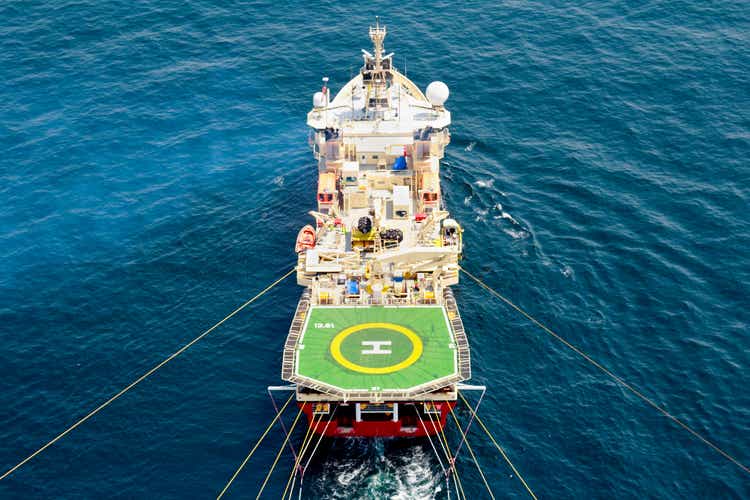
HeliRy
Geospace Technologies (NASDAQ:GEOS) offers a range of seismic data acquisition products which are primarily used to guide exploration in the oil and gas industry. The company is also expanding into new markets, including industrial sensing & IoT, smart water technologies and security & surveillance.
Over investment by customers between 2010 and 2015 contributed to a weak demand environment over the past 9 years, but CapEx is now picking up. Geospace's revenue is increasing, particularly outside of the company's core markets, and profitability is improving. Cost reduction efforts, improved market conditions and leverage inherent in the business should see profitability continue to rise in 2024. With a solid cash position and a debt free balance sheet, Geospace is also positioned to begin returning capital to shareholders.
It would be easy to dismiss Geospace as a supplier of commoditized products in a highly cyclical market. Geospace's business has evolved significantly over the past decade though. Going forward, revenues and margins are likely to be more stable than they have been in the past, which should be supportive of a higher valuation. While Geospace is up significantly off the lows, there is still substantial upside potential if the macro environment remains solid in 2024.
Market
While most parts of the oil and gas value chain have performed well over the past few years, investment in seismic surveys has been fairly modest given oil prices. Reinvestment rates have been depressed as operators have prioritized balance sheet health and returning capital to shareholders. This situation could be set to change going forward though, with CapEx continuing to increase and shift towards exploration activities. Debt levels are still relatively high though and economic uncertainty could cause operators to remain cautious.
While Geospace has faced a difficult demand environment over the past 9 years, the seismic survey market is beginning to pick up. Seismic campaigns and CapEx budgets continue to increase, although recent oil market weakness may weigh on 2024 plans. Offshore regions, including the Gulf of Mexico and the North Sea, are core to the seismic market and offshore exploration has been supported by rising geopolitical tensions and OPEC supply cuts.
Geospace began to see increased rental demand in the third quarter of FY2023. The company’s marine wireless rental fleet is now near full utilization but demand for Geospace’s land-based wireless products remains low. The ocean bottom node market is driving activity and growth at the moment, which Geospace has attributed to the data quality requirements of library houses and oil companies. While Geospace believes that the volume of planned exploration activity is supportive of continued growth, the company expects gaps in some of its OBX rental contracts. This is expected to create uneven revenue in FY2024.
Geospace still believes that its reservoir monitoring business has potential, as it can help operators to better manage production through the life of a reservoir. There could be some PRM tenders coming out in 2024 which would support this business.
Geospace
Geospace Technologies’ background is in seismic exploration products for the oil and gas industry. These products include geophones, hydrophones, leader wire, connectors, cables, marine streamer retrieval and steering devices. Geospace also offers reservoir monitoring products, including OptoSeis and downhole geophones for monitoring hydraulic fracturing. In recent years the company has tried to diversify its revenue base by expanding into adjacent markets leveraging its existing capabilities. This includes vibration monitoring for perimeter security and geotechnical applications, as well as non-seismic products like water meter products, imaging equipment, remote shutoff water valves and contract manufacturing services.
Oil and Gas
Within its portfolio of oil and gas solutions, wireless systems have been driving Geospace's growth. Wireless systems have less maintenance requirements, less environmental impact and are easier to operate. Investors may be skeptical about the long-term prospects of this business, as upstream exploration is likely to be one of the first parts of the oil and gas industry to enter terminal decline. This is still likely years in the future though and will be gradual when it does occur.
Geospace also provides permanently installed reservoir monitoring systems. The company currently has electrical monitoring systems installed in the North Sea, amongst other areas. Through the acquisition of OptoSeis, Geospace also now offers fiber optic reservoir monitoring. This business hasn't been a meaningful contributor for the better part of a decade though. Even when customers see the value of making large investments in reservoir monitoring, seismic is just one option.
Adjacent Markets
Geospace is leveraging its technology and manufacturing expertise to expand into adjacent markets. Industrial solutions include:
- Industrial sensors
- Smart meter connectors, antennas and accessories
- Water utility IoT control, monitoring and data management
- Thermal imaging and electronic pre-press solutions
- Contract manufacturing
- Specialty cables
Smart water meter connector cables drove industrial growth in FY2023. Geospace’s water meter products provide customers with automated meter-reading and automated meter infrastructure.
Geospace acquired Aquana in 2021, a wireless water monitoring and control system provider. The company’s water IoT platform and remote shut off valves enable commercial property managers to monitor for leak and burst events and shut off water remotely to prevent damage. These products also allow utilities to monitor and control water usage remotely. By some estimates, 20% to 30% of all water produced by utilities is non-revenue.
Geospace's Imaging products include electronic pre-press products, direct-to-screen printing systems, and digital inkjet printing technologies. These products are targeted at customers in the commercial graphics, textile and flexographic printing industries.
Geospace also provides a range of contract manufacturing services, including printed circuit board manufacturing, cabling and harnesses, machining, injection molding and electronic system assembly.
This is an eclectic product mix, which doesn't have a clear strategic logic. Geospace appears to be having success with its smart water meter and IoT business though.
Emerging Markets
Geospace's Emerging Markets business currently consists of Quantum's proprietary SADAR detection system. SADAR is a seismic monitoring solution that classifies and locates subsurface events of interest, automatically and in real-time. SADAR delivers greater range and accuracy via a reduced seismic data acquisition network. SADAR is primarily targeted at perimeter security surveillance and cross-border tunneling detection, amongst other security applications. It can also be used for passive seismic monitoring of carbon capture and storage and geothermal energy projects.
This business is currently generating limited revenue but has significant potential if SADAR sees wider adoption. SADAR appears to primarily be software to extract signals from noisy data and identify events. I am not sure to what extent Quantum has an advantage in this area though.
Security solutions revenue currently comes from government and commercial security and surveillance. Geospace won a 10 million USD contract with the Department of Homeland Security in 2020. During the second quarter of FY2023 Geospace announced a 1.5 million USD contract with DARPA to explore an acoustic monitoring system for land, water and air environments. Geospace has a backlog of 2 million USD from on-going contracts with the Department of Defense and the Department of Homeland Security.
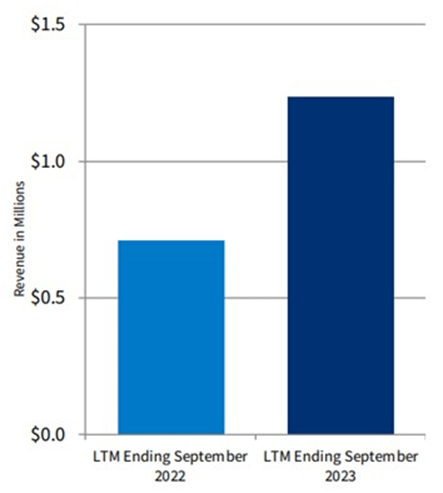
Figure 1: Geospace LTM DoD Revenue (source: Geospace Technologies)
Financial Analysis
Geospace's revenue increased 13% YoY in the fourth quarter of FY2023 and 40% for the full year. Increases in utilization and rentals of OBX ocean bottom nodes were growth drivers in FY2023. Geospace also saw increased sales of wireless seismic products and higher demand for marine products.
While revenue diversification efforts are progressing, oil and gas is still responsible for around 60% of revenue. Adjacent market revenue grew 25% in FY2023, driven by demand for Geospace's water meter cables and connectors.
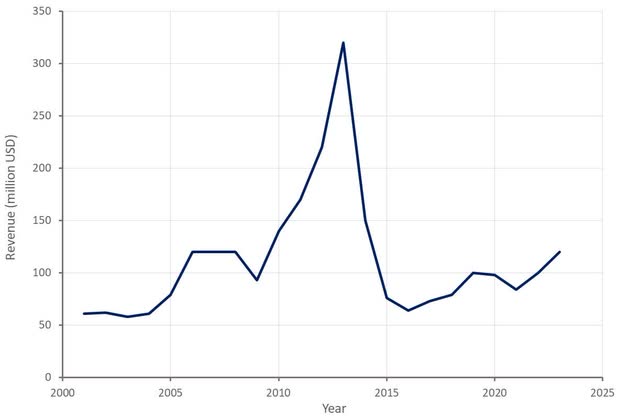
Figure 2: Geospace Revenue (source: Created by author using data from Geospace Technologies)

Table 1: Oil and Gas Market Revenue FY2023 (source: Created by author using data from Geospace Technologies)

Table 2: Adjacent Market Revenue FY2023 (source: Created by author using data from Geospace Technologies)

Table 3: Emerging Market Revenue FY2023 (source: Created by author using data from Geospace Technologies)
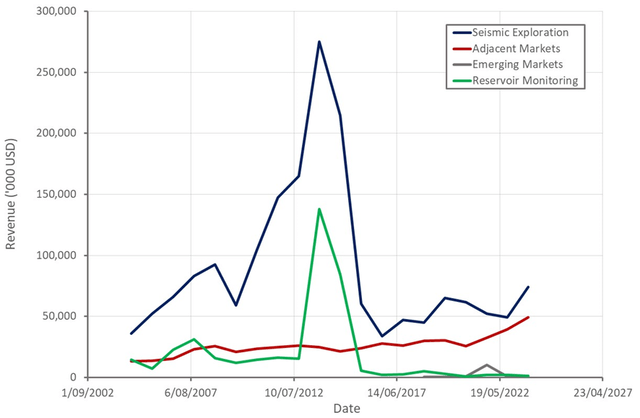
Figure 3: Geospace Revenue by Source (source: Created by author using data from Geospace Technologies)
With Geospace's revenue continuing to increase, the company is now reaching a point where it is likely to start generating meaningful profits. Geospace's offshore rental fleet is close to full capacity and utilization is driving gross profit margins. If demand increases from current levels, prices and margins could move sharply higher.
Geospace also began implementing a plan to discontinue manufacturing certain low margin products in the first quarter of FY2023. Along with this, a headcount reduction was executed which is expected to lower costs by over 2 million USD annually. Geospace has also reconfigured and consolidated its production facilities, which is expected to yield further cost savings.
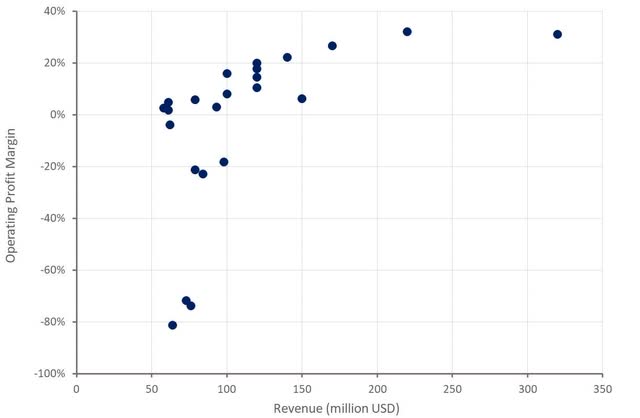
Figure 4: Geospace Operating Profit Margin (source: Created by author using data from Geospace Technologies)
Conclusion
I am not particularly bullish on oil and gas at the moment, as I believe the demand environment is likely to remain sluggish and supply growth more robust than generally expected. Despite this, Geospace could still be an attractive opportunity, as the company's valuation is still depressed. Geospace's growing success outside of its core markets probably warrants a rerating higher. In addition, Geospace has no debt and around 34 million USD cash and investments on its balance sheet, positioning the company to navigate any downturn in the oil market.
If demand remains solid in 2024, Geospace may begin returning cash to shareholders, which should help to support the stock price. There is also potential upside from reservoir, carbon storage and geothermal monitoring and security products.

Figure 5: Geospace EV/S Multiple (source: Seeking Alpha)
Disclaimer: Investing carries risk. This is not financial advice. The above content should not be regarded as an offer, recommendation, or solicitation on acquiring or disposing of any financial products, any associated discussions, comments, or posts by author or other users should not be considered as such either. It is solely for general information purpose only, which does not consider your own investment objectives, financial situations or needs. TTM assumes no responsibility or warranty for the accuracy and completeness of the information, investors should do their own research and may seek professional advice before investing.

